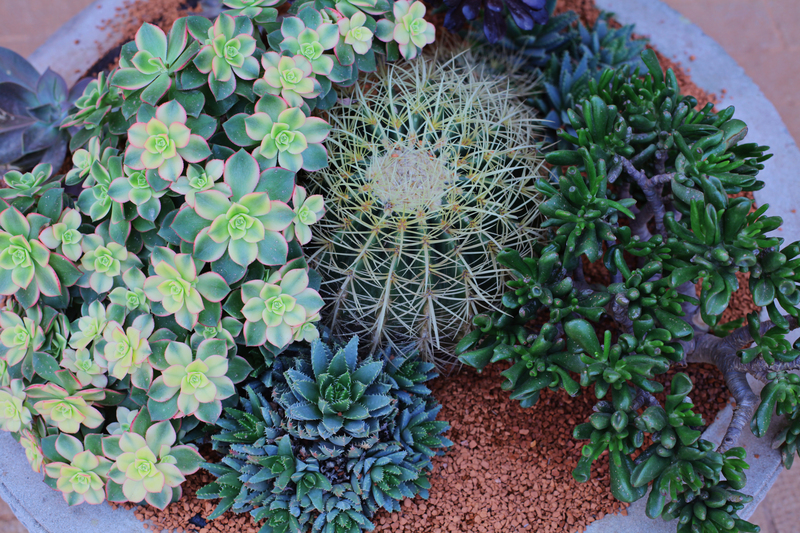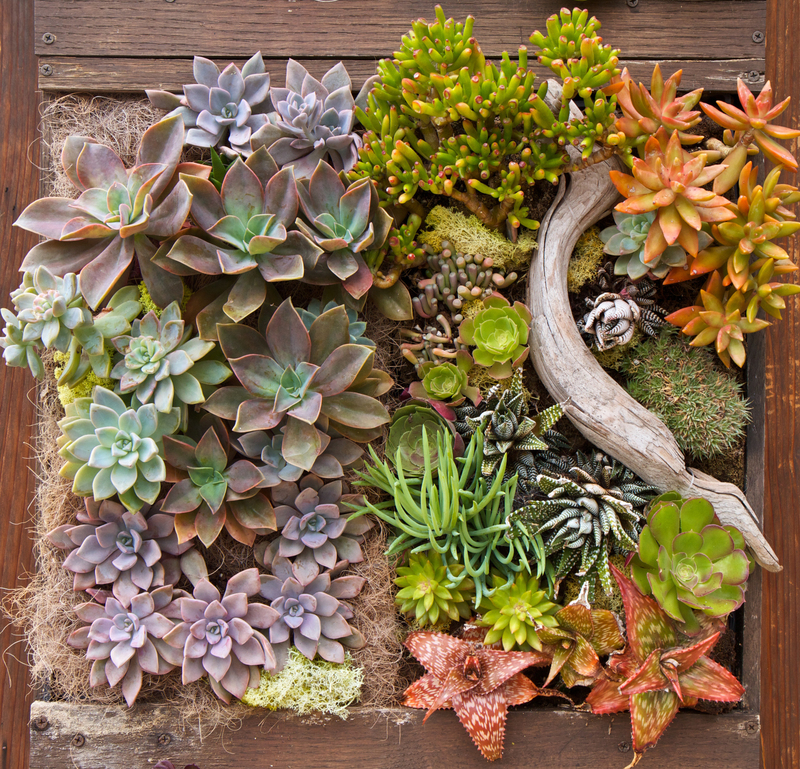Grow magnificent orchids with confidence
Posted on 19/05/2025
Grow Magnificent Orchids With Confidence: Your Ultimate Guide
Are you yearning to grow magnificent orchids with confidence? You're not alone! Orchids, with their dazzling blooms and exotic elegance, capture the hearts of plant lovers worldwide. However, these enchanting beauties have a reputation for being finicky. Fortunately, with the right knowledge and approach, anyone can cultivate *stunning* orchid plants--whether you're a beginner or already an orchid enthusiast. In this in-depth article, we'll walk you through every step to ensure your orchids not only survive but flourish magnificently in your home.

Understanding Orchid Diversity
Before you begin growing orchids, it's crucial to understand the amazing diversity within the orchid family (Orchidaceae). With over 25,000 species and more than 100,000 hybrids, orchids come in a *bewildering* array of shapes, sizes, and colors. Their care requirements can be surprisingly different. To confidently grow stunning orchids, it's best to start by knowing your plant!
Popular Orchid Types for Home Growing
- Phalaenopsis (Moth Orchid): Gentle, forgiving, and ideal for beginners. Offers long-lasting blooms.
- Cattleya: Known as the "queen of orchids." Gorgeous, fragrant flowers; prefers bright light.
- Dendrobium: Highly diverse, with both warm and cool-growing varieties.
- Oncidium: Produces sprays of small, intricate flowers; loves bright, indirect sunlight.
- Paphiopedilum (Lady's Slipper Orchid): Beautiful, pouch-shaped flowers; prefers moderate light and high humidity.
Selecting the right type of orchid for your environment and lifestyle is the first step toward growing spectacular orchids easily. Phalaenopsis, for example, is *perfect* for those just starting out.
Choosing and Setting Up the Perfect Growing Environment
Orchids may seem delicate, but with the proper growing environment, they're surprisingly resilient. The secret to cultivating magnificent orchids confidently lies in mimicking their natural tropical habitats.
Light Requirements
- Bright, indirect sunlight is ideal for most orchids. A north or east-facing window is often best.
- Direct sunlight can scorch orchid leaves. Use sheer curtains to diffuse harsh midday rays.
- If your home is dark, consider supplemental grow lights, placing them 6-12 inches above the plant.
- Phalaenopsis and Paphiopedilum thrive in lower light, while Cattleya and Oncidium appreciate more brightness.
Temperature & Humidity
- Orchids enjoy temperatures between 60-80?F (16-27?C) during the day and a slight drop at night.
- Maintain humidity levels between 50-70%. Place your orchids on a humidity tray, use a room humidifier, or group plants together for best results.
Air Circulation
- Good air movement is key to preventing disease. Use a small fan (not facing directly at plants) to keep air flowing gently around your orchids.
Planting Media and Repotting
Unlike many houseplants, *orchids do not grow in ordinary soil*. They are epiphytes, naturally growing in tree crevices, with roots exposed to air and rain. The right planting medium promotes root health and prevents root rot.
Best Orchid Potting Mix
- A mix of bark chips, sphagnum moss, charcoal, and perlite provides good drainage and aeration.
- Choose a mix suited for your orchid type: Phalaenopsis prefer a finer, moisture-retentive medium, while Cattleya may need chunkier bark for more airflow.
Repotting for Robust Growth
- Repot orchids every 1-2 years, or when the medium breaks down and roots outgrow the pot.
- Gently remove old media, snip off dead roots, and place the plant in a clean container just big enough to fit the roots.
- *Repot after flowering* for minimal stress to your plant.
Watering Orchids With Confidence
Watering is often the greatest *source of anxiety* for new orchid growers--but it doesn't have to be! Orchids like to dry out between waterings. Overwatering is the #1 cause of trouble. You can grow magnificent orchids easily by following these watering guidelines:
- Check roots before watering: If roots are silvery or white, it's time to water. If green, wait another day or two.
- Water early in the day, allowing excess moisture to evaporate.
- Use room-temperature water; avoid softened water with added salt.
- Thoroughly soak the growing medium, then let all excess water drain away.
- *Never let an orchid sit in water*--this can quickly cause root rot.
Feeding for Spectacular Blooms
To help your orchids grow strong and produce jaw-dropping flowers, regular feeding is a must. Orchids are *not* heavy feeders, but they do appreciate a regular nutrient boost.
Fertilizer Best Practices
- Use a balanced, water-soluble orchid fertilizer (20-20-20), following the package for dilution rates.
- Feed weakly, weekly: mix fertilizer at 1/4-1/2 strength and apply every week during active growth.
- Flush the potting medium with plain water once a month to prevent salt build-up.
- Some growers use a special "bloom booster" fertilizer high in phosphorus before and during flowering.
Encouraging Orchid Flowering and Re-Bloom
Once you have healthy, leafy orchids, the next step in your orchid confidence journey is coaxing them into bloom! While some varieties naturally flower once a year, others (like Phalaenopsis) can re-bloom multiple times annually with proper care.
Tips to Trigger Spectacular Orchid Flowers
- Provide a day-night temperature drop of 10-15?F (5-8?C) for a few weeks in autumn--this initiates bloom spikes in many orchids.
- Keep light levels adequate, especially for Cattleya and Oncidium--insufficient light delays flowering.
- Be patient! Some orchids require a period of rest after flowering before sending up new spikes.
- Continue gentle feeding and consistent watering during the flowering period.
Tip: For *Phalaenopsis*, after your first bloom finishes, cut the spike just above a node (small bump) rather than at the base. Often, a new flower spike will grow for a second round of blossoms!
Common Orchid Problems and How to Fix Them
Confidence comes from knowing how to quickly recognize and solve issues before they threaten your orchid's health. Here's how to tackle the top challenges:
Yellowing Leaves
- Lower, older leaves may naturally yellow and drop--this is normal.
- Widespread yellowing signals overwatering, root rot, or nutrient deficiency.
- Check roots and adjust care as needed.
Wrinkled or Limp Leaves
- Usually a sign of underwatering or root loss.
- Inspect roots--if they're mushy, reduce watering and repot in fresh medium.
Pests (Scale, Mealybugs, Spider Mites)
- Wipe leaves with a cotton swab dipped in rubbing alcohol.
- Shower plants with a gentle spray or use insecticidal soap.
- Maintain good airflow to deter pests.
Advanced Orchid Care: Tips For Show-Quality Blooms
Once you have the *basics* down, you can grow show-stopping, magnificent orchids with advanced techniques:
- Increase humidity with a pebble tray or room humidifier, especially during winter heating.
- Rotate your orchids for even growth and floriferous spikes.
- Monitor roots regularly for health; healthy roots are plump and green or white during hydration.
- Group different varieties for a *spectacular* indoor display.
- Experiment with gentle root pruning and division as your collection grows, sharing propagated orchids with friends.
Orchid Myths Debunked
There's a lot of misinformation about orchid cultivation. Let's clear the air so you can grow your orchids *confidently*:
- Myth: Orchids are impossible to grow. Fact: Many, like Moth Orchids, are very forgiving!
- Myth: They only bloom once. Fact: Most rebloom every year, and some several times per year if well cared for.
- Myth: Orchids need to be fertilized heavily. Fact: Light, regular feeding is best--less is more.

Your Path to Orchid Growing Confidence
*Growing magnificent orchids isn't out of reach!* Anyone can successfully cultivate breathtaking orchids with the right information and care. Here's your action plan to nurture stunning orchids confidently:
- Start with a beginner-friendly variety like the Moth Orchid.
- Pay attention to light and humidity.
- Choose the right potting mix and repot regularly.
- Water only when roots are dry--not on a calendar.
- Feed "weakly, weekly" and flush salts every month.
- Address problems promptly and don't be afraid to experiment.
- Join local orchid societies or online forums for advice and inspiration.
Conclusion: Magnificent Orchids Await
With the tips and step-by-step advice in this guide, you can confidently grow magnificent orchids that will delight you for years to come. Whether you're dreaming of windowsills brimming with blooms or creating breathtaking indoor displays, the keys to *orchid excellence* are within your grasp. Don't let orchid myths or past failures hold you back--start your glorious orchid-growing journey today, and watch your confidence and beauty grow side by side!
For more tips on successfully growing stunning orchids at home, bookmark this guide and share it with other plant lovers. Soon, you'll be the one inspiring others with your magnificent, healthy orchids!

